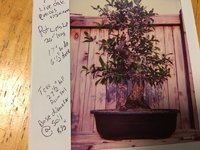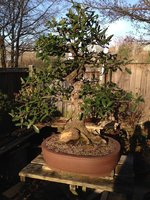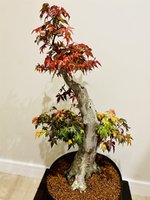Was thinking long and hard about this topic the other day when reading different threads, focusing on the trends and commonalities on the forum.
There‘s lots of divergent points of view in the bonsai world. Yet bonsai is a big and ever expanding umbrella where everyone is welcome!
The results of my pondering yielded results that seem so simple to me, it took an effort to actually post these, yet this thread is a good example that fits in with what I was thinking about.
Some folks like the older collected material so they can focus on styling. Results can come fast.
Others enter using nursery material due to budget. These folks need to learn a different type of selection and styling.
There are folks work from seedlings and cuttings, building trees from the ground up over the years, while learning styling along the journey. Carefully done, fine results happen and a whole lot gets learned along the way. (See below group.)
Then there are other hobbyists. Those who work all angles at once, learning the characteristics of trees from every level at the same time. This choice can be very taxing. Yet it makes a hobbyist very well rounded, understanding every facet and nuance of the hobby, similar to the groip above, yet in a collapsed timeframe.
So many options, yet the base knowledge that is needed by every hobbyist is that of proper horticulture for each tree in their collection at very development stage. Without this knowledge nothing moves forward.
Acquiring a sense of the principles and elements of style and physical techniques (air layering, grafting, bending, carving, wiring, display etc.) to aid in this work is a full time job… but only after a mastery of horticulture for each tree is acquired.
Anyways, just some thoughts…
cheers
DSD sends









